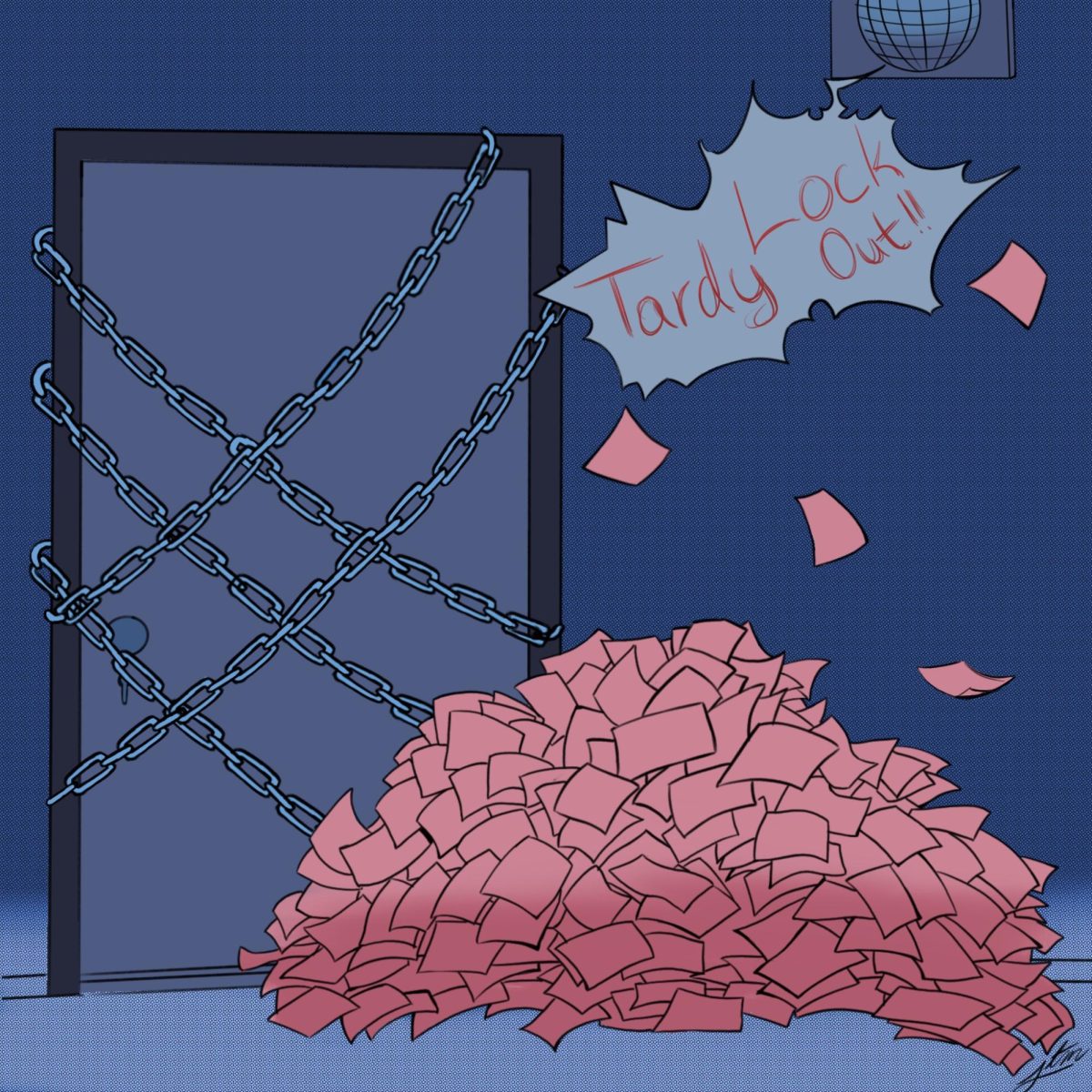The bell rings its annoying, ear piercing, five second screech. A moment later, the intercom buzzes: “Teachers, please lock your doors. Students, you know where to go.”
You were late to class by just a couple of seconds. Now you have to go. Where do you go? Down to the patio–wasting more minutes of instructional time–just to return to class with a slip of paper signaling your tardiness.
However, not all are so lucky. Times before have seen students spending the first few hours of their day in the auditorium, watching the clock tick by–tick by minutes of their learning, of their assigned work. Alienating students is not a feasible method for punishment. So… what is?
Tardies are major issues in schools and should be dealt with in an appropriate manner. However, I believe that our school’s current method of discipline with “tardy lockouts” is not a suitable approach to this.
A suggestion to solve the problems listed above is to simply get rid of the lockouts. They are initiated to catch students who don’t make it to class on time so staff can ensure students receive the correct tardy marking and recognize the importance of arriving to class on time. However, the whole idea of tardy lockouts removes even more instructional time since students need to go to the cafeteria patio or auditorium. Without the tardy lockouts, students will still be late to class because they were tardy and will be marked late by their teachers, but they won’t waste even more time on top of the initial tardy.
I experienced a tardy lockout myself last year. Due to various circumstances (the door at the staircase to the history hall that sometimes gets jammed being one of them) I was late to class and was stopped in the hall by admin as the intercom buzzed. I was told to report to the auditorium and placed in in-school suspension (ISS) for the rest of the morning. I missed out on instructional time–had to make up the work myself–and instead spent two and a half hours sitting in a plastic chair. The lesson I learned was to either a) be paranoid of a tardy lockout between every class for the next year, or b) rush to class and push my way through crowds of students. I’ve done both, and neither have benefited me.
The tardy lockout system holds no positive consequences, only negative ones. Instead of promoting on-time habits, the system has suggested to students that they could purposely be late to class so they can miss out on an even larger portion of it. The lockouts are meant to encourage students that missing class time is a significant matter, but then it contradicts itself by causing students to miss even more class time to write students up. It is about time that tardy lockouts come to an end.


